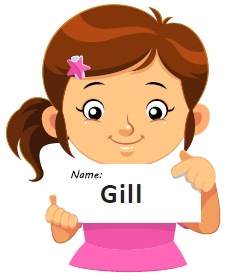Doubling up
This problem solving activity has a number focus.

If A = 1, B = 2, C = 4, D = 8, E = 16, F = 32, G = 64 and so on.
The value of Gill’s name is 64 + 256 + 2048 + 2048 = 4416.
What is the value of your name?
Change the rules so that the square root of the value of your name is 248.
- Perform calculations with powers of numbers and square roots.
- Explain the relation between a square root and a square.
- Devise and use problem solving strategies to explore situations mathematically. This problem uses be systematic, draw a picture, and think.
In this problem, which is a precursor to algebra, students work with powers of 2 as they substitute values for their own name.
Students may have encountered one of the earlier related Number problems: Points, Level 1; Names and Numbers, Level 2; Make 4.253, Level 3; Multiples of a, Level 3; and Go Negative, Level 4.
The Problem
Gill is playing with her name and with numbers. If A = 1, B = 2, C = 4, D = 8, E = 16, F = 32, G = 64 and so on. The value of Gill’s name is 64 + 256 + 2048 + 2048 = 4416.
What is the value of your name?
Change the rules so that the square root of the value of your name is 248.
Teaching Sequence
- Tell the students Gill’s story and have them calculate the value of a chosen word. Revise the meaning of square root and powers of numbers.
- Ensure that the problem and processes involved are well understood. Have some students share their ideas for calculating the value of letters near the end of the alphabet.
- Ask the students to predict whose names will be the "easiest" to calculate.
- Have each student find the value of their first name, and then check with a partner that their calculated name value is correct.
- As the students solve the problem circulate asking questions that focus on their ability to find powers of numbers.
How are you finding the value of the letters in your name?
Is your answer reasonable? How do you know? (estimation)
Are you convinced that you have a correct value for your name? Why? - Have the students put themselves into groups all of whose values end in the same two digits. Get them to think about their names to see if there is a good reason why they are all in the same group.
- In groups, have the students then find some way of making a name value whose square root is 248. Can they arrange for members of their group to have the same value using the same rules? They could be asked to find more than one way to get 2482 as their name value.
- Make the extension problem available as appropriate.
- Have some groups report on what they have done.
- Allow all students time to record their solutions.
Extension
If you substituted x for a consonant and 2x for a vowel what value would you get for your name if (i) you added the terms together to get the value and (ii) you multiplied the terms together?
Solution
The answers for part one of the question will depend upon the names of the students in the class.
Note that 2482 or 61504 is the target. To get 61504 as the target value, students should choose arbitrary values for each of their letters. If your name was Hemi, for example, you need to use some big numbers to get 61504. H, E and M can have any values, then the value of I would have to make up the required number. There are many ways to do this.
Solution to the Extension
Suppose that your name was Gill. Then in (i) you would have x + 2x + x + x = 5x. In (ii) you’d get x.2x.x.x = 2x4.
N.B. This problem gives lots of scope for exploration. You could find the biggest valued name, the smallest valued name, a name whose value is a whole number, names whose values are halves, etc. Fo the extension, you could use x for consonants and 1/x for vowels.